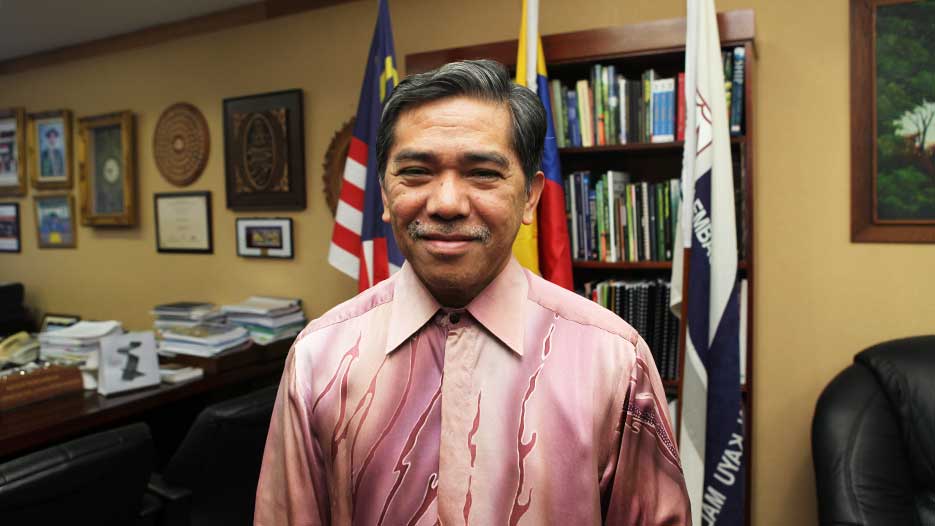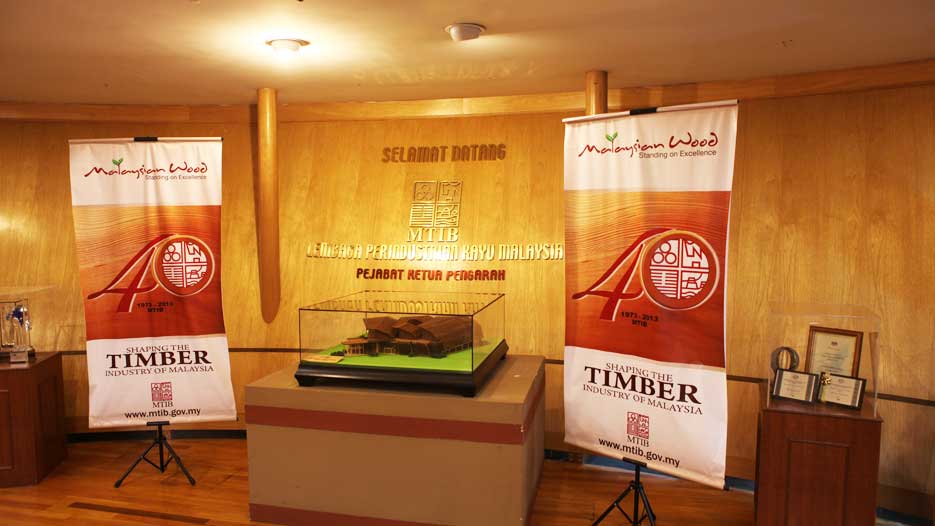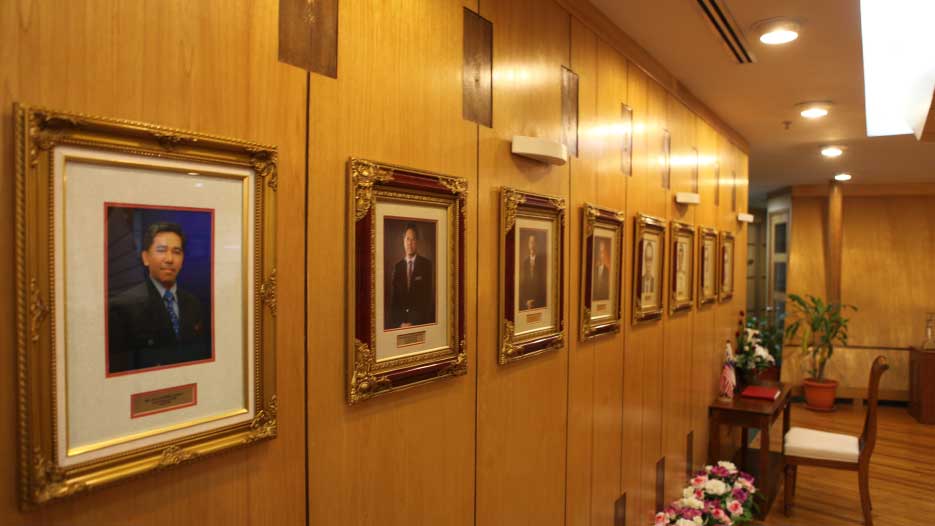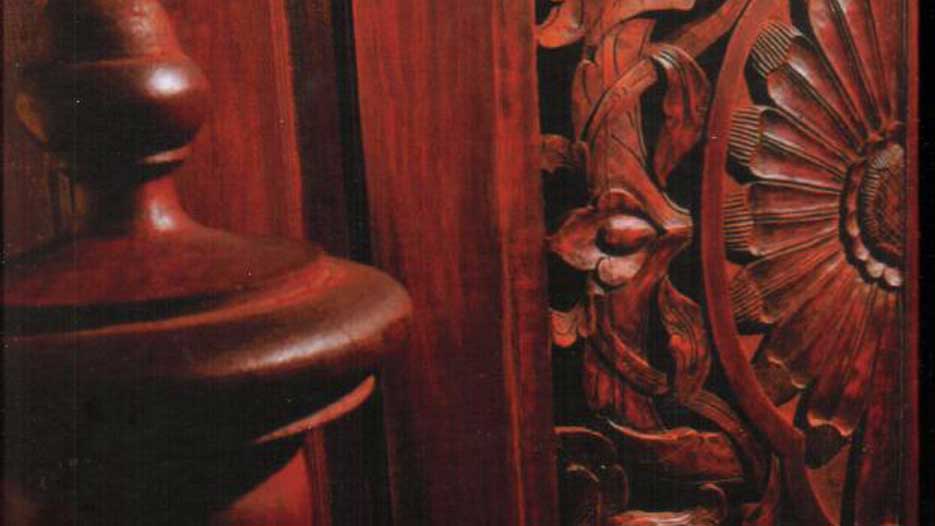Timber Industry in Malaysia: Timber Exports Represent 2.7% of Total Exports
An Act of Parliament established the Malaysian Timber Industry Board (MTIB) in June 1973. We have been in existence for 41 years. We are the regulatory body for the timber sector in Malaysia. We fall under the Federal Ministry of Plantation Industries and Commodities.
Interview with Dr. Jalaluddin Harun, Director General of Malaysian Timber Industry Board

Please give us a brief history of the Malaysian timber industry.
An Act of Parliament established the Malaysian Timber Industry Board (MTIB) in June 1973. We have been in existence for 41 years. We are the regulatory body for the timber sector in Malaysia. We fall under the Federal Ministry of Plantation Industries and Commodities.
Being the regulatory body we are responsible for the development of timber exports, enforcement and all the issues relating to the timber trade in Malaysia.
How is the Board contributing to the Malaysian economy? What are the direct and indirect effects?
Technically, for the past 10 years, we have been one of the major earners for the country. In 2013, we exported RM 19.5 billion.
That is about 2.7% of Malaysia’s export receipt. This is our major contribution to the economy. We are one of the premier exporters of tropical timber and timber products. We are a global player. For instance, we are the top exporter of sawn tropical timbers.
We are the second biggest exporter of tropical plywood in the world, after Indonesia. In value added exports, we are ranked number eight in the world in furniture exports. The Malaysian economy has benefitted from the timber sector since the inception of the MTIB and prior to that.
Infobox
Market: Export: RM 19.5 bn
Domestic: RM 13 bn
Total: RM 32.5 bn
Timber Industry Export Contribution: 2.7% from RM 719.82 bn
Investment: Domestic: RM 570.7 mln
Foreign Direct Investment: RM 47.0 mln
Total: RM 617.7mil.
Work Force: 200,000 workers

What is your main competitive advantage?
Our advantage is the size of our forest cover. In Malaysia, forests and trees cover more than 70% of our land. We also have ease of accessibility to our natural forests, giving us another advantage. In addition, our forests are well managed. We approach our harvesting or logging in a very systematic way. This contributes to the economy, especially owing to the export of tropical sawn timber and plywood. However, in recent times, raw materials supplied from forest plantations are becoming a prominent part of our offerings. Currently we have 1.2 million hectares under rubber tree plantation cover.
These trees are harvested in 25 years for timber. Rubber wood furniture accounts for about 85% of our furniture exports.
We export to the US, Europe, Japan and so on. Another advantage we have is the degree of our innovation and R&D. Our research has proved that even the oil palm can be used. Oil palms are grown for their oil.
However, after 25 years the palms have to be replanted. We can recycle the biomass of the old trees, especially the stem.
These can be converted to sawn timber, veneer, plywood and other value-added products like moldings and furniture. We are in the process of doing this. That is Malaysia’s competitive edge. We apply R&D to new materials, not just timber but we also use the oil palm. This is where we are heading.
Can you tell us about the sustainability policies you implement and what are their economic effects?
One of the government’s biggest concerns is the preservation of our natural forests. In signing the Kyoto protocol Malaysia has committed to keeping 50% of our land under forest cover. Right now, more than 56% of our land area is under forest cover. If we add all land under vegetation cover, we are closer to 70%. To sustain the growth of our timber trade we need a continuous supply of raw material. We are also constantly looking for other materials, like oil palm as I mentioned, rubber wood and other annual crops like kenaf. Kenaf is converted into a composite, and is considered close to a timber base. We grow more trees, not just cut them down from the natural forests. All this will ensure that our timber industry will move forward sustainably.

How do you propose to increase your exports? What is your strategy? Where do you see your industry by the year 2020?
We have a National Timber Industry Policy launched in 2009 by the current Prime Minister. Central to this Policy is the idea of generating a good deal of our timber industry export revenue from high value addition. We do not want to focus on just commodities, like sawn timber, logs, plywood. This only involves primary processing. Our focus is now on higher value added products. Currently, 60% of the revenue generated comes from commodities but we are shifting the focus.
By 2020, we should be at a level where 60% of revenue comes from higher value added products like furniture, moldings, builders’ joinery and carpentry.
This is a big shift. Our exports will be smaller in volume but will generate higher revenues. This is the way forward. We want to enhance our furniture sector. We also want to go to a higher level of processing, create more jobs. At the same time, we want to ensure higher levels of sustainability.
Then we can cut down less of our forest cover. In this way, we can also conserve the natural forests for other uses. It is important to remember that tropical forests are considered one of the major green lungs of our planet, in not only Malaysia, but also Indonesia, Brazil, Africa and so on.
Under NATIP, it is targeted that the export of the timber industry is to grow by 6.4% per annum to RM53 billion by 2020. To ensure the successfulness of this export target and the continued dynamism and competitiveness of the Malaysian timber industry major and pertinent thrusts are outlined in NATIP. Among which are industry structure, supply of raw materials, innovation and technology, marketing and promotion, human capital development and funding/ incentives.
What are the top contributors to the timber industry, in percentages?
We are trying to move from raw materials to value addition in our sector. Last year, in 2013, furniture export revenues were RM 6.5 billion. That is about 29% of our total exports. Plywood was a close second at about 27%. Sawn timber and the rest followed these. Our future focus will be on developing our high-value-addition products. This will employ our skilled workers in Malaysia. We have many competent university graduates who have studied our industry. We also want to enhance automation in our processes and use high quality materials.
We are already well known for the quality of our products but we aim to improve further. We are moving to greater OEM, original equipment manufacturing. We are also moving towards using more of our own designs in manufacturing furniture. That gives us the value addition. We are also interested in our own brand manufacturing, like the Italians. Having our own designer brands fetches premium value. By 2020, we expect to have reached a target of RM 16 billion in furniture exports, out of a total of RM 53 billion target export in the sector.

What are your main challenges, now and in the future?
One of our biggest challenges is the high demand in the market. The market demands a very high quality product at a very competitive price. Additionally, forest certification is now a must. We have to ensure that the materials we use are legally obtained and sustainably produced. That is the thing with established markets like the US, Europe and Japan. Another challenge is that we are a small nation, with a population of just 28 million. That is probably the population of just 2 or 3 cities in Brazil. Therefore, we have to focus on skilled workers and more automation. The strong technology will reduce our reliance on workers, as we do not have such a large pool of workers because of our small size. This is especially important in labor-intensive sectors like furniture making. This is an ongoing challenge.
We must increase our productivity and quality must be continually enhanced. Our products must be of the best quality but they must remain competitively priced. Raw materials, labor and technology are all important parts of this. Our universities are generating timber and timber-products graduates. We also have skills training. Malaysia is focusing on skills training. We compete in world skills competitions. The last one was in Leipzig. Next year the world skill competition will be held in Sao Paolo, Brazil. Malaysia participates in the woodworking, joinery and cabinet making segments. The greatest challenge will be shifting modes from commodities to value-added products.
How will you attract foreign investors into the sector? What are the opportunities?
The first thing the foreign investor checks is the investing environment in Malaysia, the logistics, the infrastructure. We have very good ports, an excellent road system and a very good legal system. This is attractive to FDIs. The availability of raw materials is also crucial. We are not like Japan, which doesn’t have much in the way of resources. They have to import almost everything. This is an advantage for us. Another crucial point for investors is the stability of a country.

Since independence in 1957, Malaysia has been ruled by a party, which won almost every election, until election number 13. Therefore, we are a democracy but the one party that has won all the elections provides a stability that is so important to investors. Thirdly, investors look for skilled workers, which we have. Additionally the government provides incentives for investors such as Pioneer Status, Double Taxation and so on. Together, all these make a fine climate for foreign investors in the timber sector in Malaysia.
In conclusion, what are the five largest timber /furniture manufacturing companies?
Most of the furniture manufacturing companies are in two states, Johor and Selangor. There is some activity in the north, in Penang. So it is in the north, the centre and the south. The south is very close to Singapore. Some of the companies are quite large with a turnover of about RM 400 million annually. They export about 500 containers a month, to US, to Europe. However, this sector is almost exclusively made up of SMEs, small and medium scale enterprises.
We would like them to grow. If we give them the proper environment, proper incentives and the necessary boosts in manpower and technology, they are set to grow. The Malaysian furniture industry is ranked number 8 in the world in terms of global export. We have developed this sector for the past 30 to 40 years. We have established a certain level of processing expertise. We will now enhance it into own design, not just reproduction for the export market.